MADE IN JAPAN
When I visited Chernobyl for the first time 7 years ago, I didn’t think that a similar disaster could take place anywhere ever again, and certainly not in Japan. After all, nuclear power is safe and the technology is less and less prone to failure, and therefore a similar disaster cannot happen in the future. Scientists said this, firms that build nuclear power stations said this, and the government said this.
But it did happen.
When I was planning my trip to Fukushima I didn’t know what to expect. There the language, culture, traditions and customs are different, and what would I find there four years after the accident? Would it be something similar to Chernobyl?
THE DISASTER
This photographic documentary is not intended to tell the story of the events surrounding the disaster yet again. Like the incident that occurred on 26 April 1986, most readers know the story well. It is worth mentioning one very important aspect, however, which is an essential issue as we consider the story further. It is not earthquakes or tsunami that are to blame for the disaster at the Fukushima Daiichi nuclear power station, but humans. The report produced by the Japanese parliamentary committee investigating the disaster leaves no doubt about this. The disaster could have been forseen and prevented. As in the Chernobyl case, it was a human, not technology, that was mainly responsible for the disaster.
As will be seen shortly, the two disasters have much more in common.
RADIATION OR EVACUATION
Immediately after the disaster at the Fukushima power station an area of 3 km, and later 20 km, was designated from which approximately 160 000 residents were forcibly evacuated. Chaos, and an inefficient system of monitoring radiation levels, resulted in many families being divided up or evacuated to places where the contamination was even greater. In the months and years that followed, as readings became more precise, the boundaries of the zone evolved. The zone was divided up according to the level of contamination and the likelihood that residents would return.
Four years after the accident more than 120 000 people are still not able to return to their homes, and many of them are still living in temporary accommodation specially built for them. As with Chernobyl, some residents defied the order to evacuate and returned to their homes shortly after the disaster. Some never left.
It is not permitted to go to towns and cities located in the zone with the highest levels of contamination, marked in red, except with a special permit. Due to the high level of radiation (> 50 mSv/y), no repair or decontamination work is carried out there. According to the authorities’ forecasts the residents of those towns will not be able to return for a long time, if at all.
The orange zone is less contaminated but also uninhabitable, but because the level of radiation is less (20-50 mSv/y) clearing up and decontamination work is being done here. Residents are allowed to visit their homes but are still not allowed to live in them.
The zone with the lowest level of radiation (< 20 mSv/y) is the green zone, and decontamination work has been completed here. Now the clean-up is in its final stages, and soon the evacuation order is to be lifted.
DECONTAMINATION
When entering the zone, the first thing that one notices is the huge scale of decontamination work. Twenty thousand workers are painstakingly cleaning every piece of soil. They are removing the top, most contaminated layer of soil and putting it into sacks, to be taken to one of several thousand dump sites. The sacks are everywhere. They are becoming a permanent part of the Fukushima landscape.
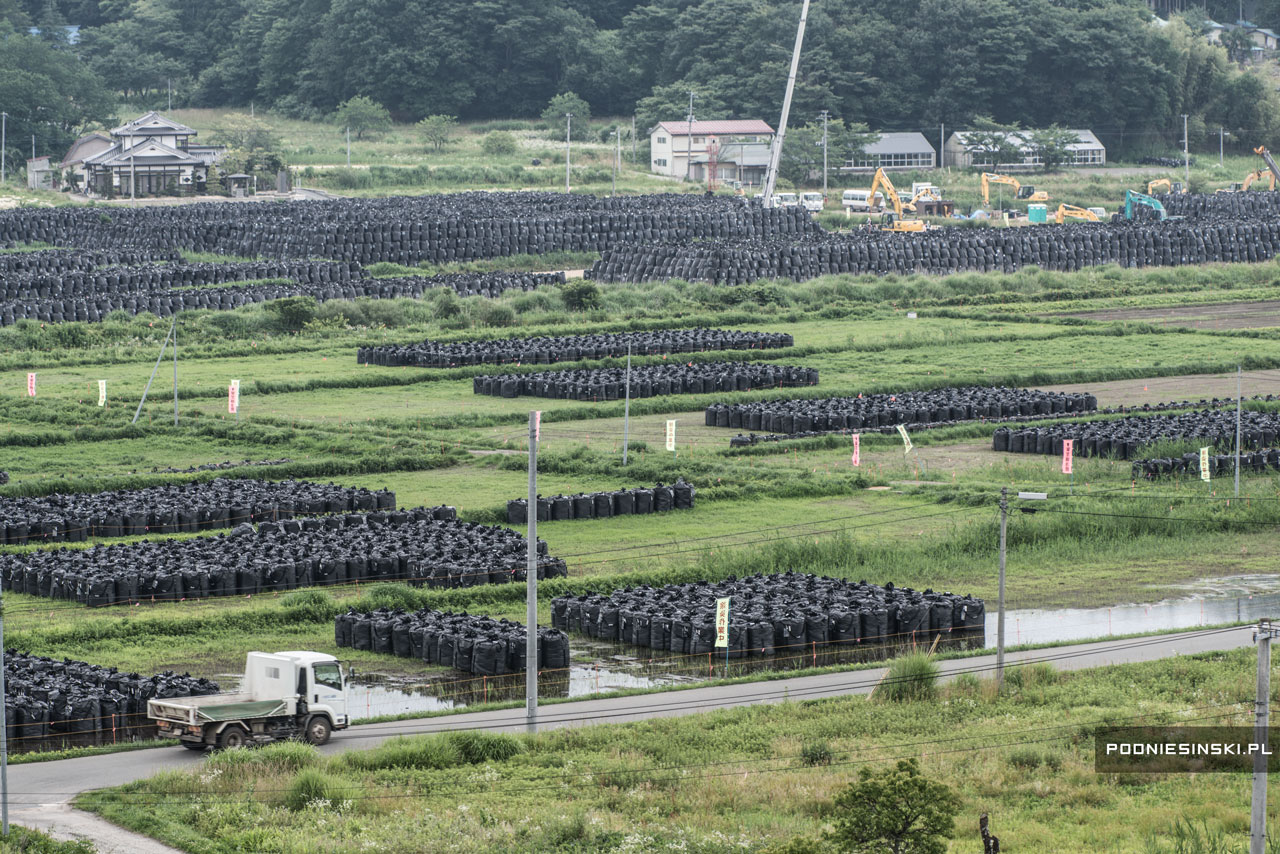
Dump sites with sacks of contaminated soil are usually located on arable land. To save space they are stacked in layers, one on top of the other.
The decontamination work does not stop at removal of contaminated soil. Towns and villages are being cleaned as well, methodically, street by street and house by house. The walls and roofs of all the buildings are sprayed and scrubbed. The scale of the undertaking and the speed of work have to be admired. One can see that the workers are keen for the cleaning of the houses to be completed and the residents to return as soon as possible.
What the workers, and in fact the government financing their work, want to achieve is not necessarily what the residents themselves want. The contaminated land is not reused, and doesn’t even leave the zone. It is only transported out of the town often not beyond the outskirts. This expensive operation is only the shifting of the problem from one place to another, just so long as it is outside of the town to which residents are soon to return.
It is still not clear where the contaminated waste will end up, especially as the residents protest against long-term dump sites being located near their homes. They are not willing to sell or lease their land for this purpose. They do not believe the government’s assurances that in 30 years from now the sacks containing the radioactive waste will be gone. They are worried that the radioactive waste will be there forever.
Many areas cannot be decontaminated at all because of thick forests or because they are mountainous. Only houses and areas surrounding the houses, and 10-metre strips along the roads, are decontaminated. This gives rise to the reasonable fear on the part not only of residents, but also of scientists, that any major downpour will wash radioactive isotopes out of the mountainous, forest areas and the inhabited land will become contaminated again. The same is true of fire, which, helped by the wind, can easily carry radioactive isotopes into the nearby towns. These fears are not without foundation, over the last year this has happened at least twice in Chernobyl.
Given the situation, the attitude of the residents, who are distrustful of the authorities, are worried about contamination, and do not want to return to their homes, is no surprise. A survey carried out on former residents of the red zone shows that only 10% of those polled want to return to their homes, while as many as 65% of evacuees do not intend to go back. In fact, what do they have to return to? The lack of work, infrastructure, and medical care is an effective deterrent to returning even for the most optimistic residents, and with each year that passes this will be more difficult; the residents get older, like the deserted houses they are not renovating. Are the towns to remain deserted forever?
There are also reasons for an unwillingness to return that residents do not like to talk about, and this is the compensation and the various types of subsidies and tax relief that evacuees receive. The compensation for the moral wrongdoing alone, that every evacuee gets, is 100 000 yen (approximately 850 dollars). Some residents have protested, and are even taking legal action against the government, which intends to stop compensation one year after a zone (the green and orange zones) is opened. The residents are scared that the authorities’ actions are an attempt to coerce them into returning, especially as the government arbitrarily raised the permitted level of exposure to radiation per year from 1 to 20 mSv.
NO-GO ZONE
The decision not to come to Fukushima until four years after the disaster is a deliberate one, as most of the destruction caused by the earthquake and tsunami has been cleared up. Above all, I would like to focus on the accident at the nuclear power station and the effects it had on the environment and the evacuated residents, and compare it to Chernobyl. For this reason, what I would like to do the most is see the orange zone and the red zone, the most contaminated and completely deserted. In the latter, no clearing up or decontamination work is going on. Here time has stood still, as if the accident happened yesterday.
A separate permit is required for each of the towns in the red zone, which is issued only to people who have a legitimate, official reason to go there. No tourists are allowed. Even journalists are not welcome. The authorities are wary, they enquire after the reason, the topic being covered, and attitude towards the disaster. They are worried that journalists will not be accurate and objective when presenting the topic, but they are most likely scared of being criticized for their actions.
I try to arrange entry into the no-go zone while still in Poland. I get help from colleagues, authors of books, and journalists who write about Fukushima. They recommend their friends, they recommend their friends, and they recommend their friends. It is not until I travel to Fukushima and spend two weeks there that I am able to make contact with the right people. It turns out that the knowledge I have and the photographs I have taken in my career from numerous visits to Chernobyl convince these people to help me.
While I am waiting for the permits to be issued I visit the towns in the orange zone. It takes me two days to find the house of Naoto Matsumura, a farmer who returned illegally to the zone, which at that time was still the red zone, not long after the accident. He returned to take care of the abandoned animals. He gives the reasons for returning, saying that he could not bear to see whole herds of cattle wandering aimlessly in the empty streets when their owners had fled the radiation. He tells of how they were starving to death or were being killed and used for recycling by the authorities. What have they done wrong that makes it right to kill them for no reason – he asks, trying to explain why he returned illegally.
When Matsumura finds out that I visit Chernobyl regularly, the person asking the questions quickly becomes the person being asked them. Matsumura is curious about how the evacuation was carried out in Chernobyl, how decontamination was carried out, and the level of radiation. He asks specific questions, enters into a discussion, compares the radiation levels. It is clear that due to the Fukushima disaster he learnt the professional terminology and terms relating to the issue. Unfortunately time flies relentlessly and Matsumura has to get back to his duties. We arrange to meet again in the autumn.
It is still illegal for residents to return permanently to towns located in the orange zone. They are only allowed to spend time there in the daytime, but even during the day it is hard to find any residents here. Most do not want to return, and soon they won’t have anything to come back to. Many of the deserted houses, especially the wooden ones, are in such a state of disrepair that soon it will be not be financially viable to renovate them, and if they are not renovated they will start to fall down. Maybe this is a conscious choice on the part of the residents, who allow this to happen because they have already made up their minds never to return to them?
Young residents or families with children left Fukushima long ago. In pursuit of a better life, a better future, they went to Tokyo or other large towns. The older residents, more attached to the place they have lived for several decades, prefer to live nearby, in specially built temporary housing. Others went to relatives, but not for long, so as not to be a burden. They return to their temporary housing, two tiny rooms and a kitchen in the hall.

Youko Nozawa takes me to the temporary housing she was moved to after weeks of moving from place to place during the evacuation. Being invited inside is quite a privilege and a demonstration of trust for the Japanese, who value their privacy.
NAMIE
A week later I have the permit in my hand and can finally make my way to Namie, one of three towns in the no-go zone. Although the town is completely deserted, the traffic lights still work, and the street lamps come on in the evening. Now and again a police patrol also drives by, stopping at every red light despite the area being completely empty. They also stop next to our car and check our permits carefully.
I am accompanied by three Namie residents who want to show me the houses they were evacuated from. The earthquake did not do any serious damage to the houses, and being situated a long way from the ocean they were also not at threat from the killer tsunami wave. It was only the radioactive cloud that forced residents to flee.
In order to see the effects of the tsunami we go to the coast, where all of the buildings were destroyed. Although four years have passed, the clean-up is still going on, although most of the damage has now been cleared up. Behind the buildings one concrete building stands out, which was capable of withstanding the destructive force of the tsunami. It is a school, built using TEPCO money, where the schoolchildren luckily survived by escaping to the nearby hills.

The primary school building that survived is situated a mere 300 metres from the ocean. On the tower, as in all of the classrooms, there are clocks which stopped at the moment the tsunami came (at the time the power went off).
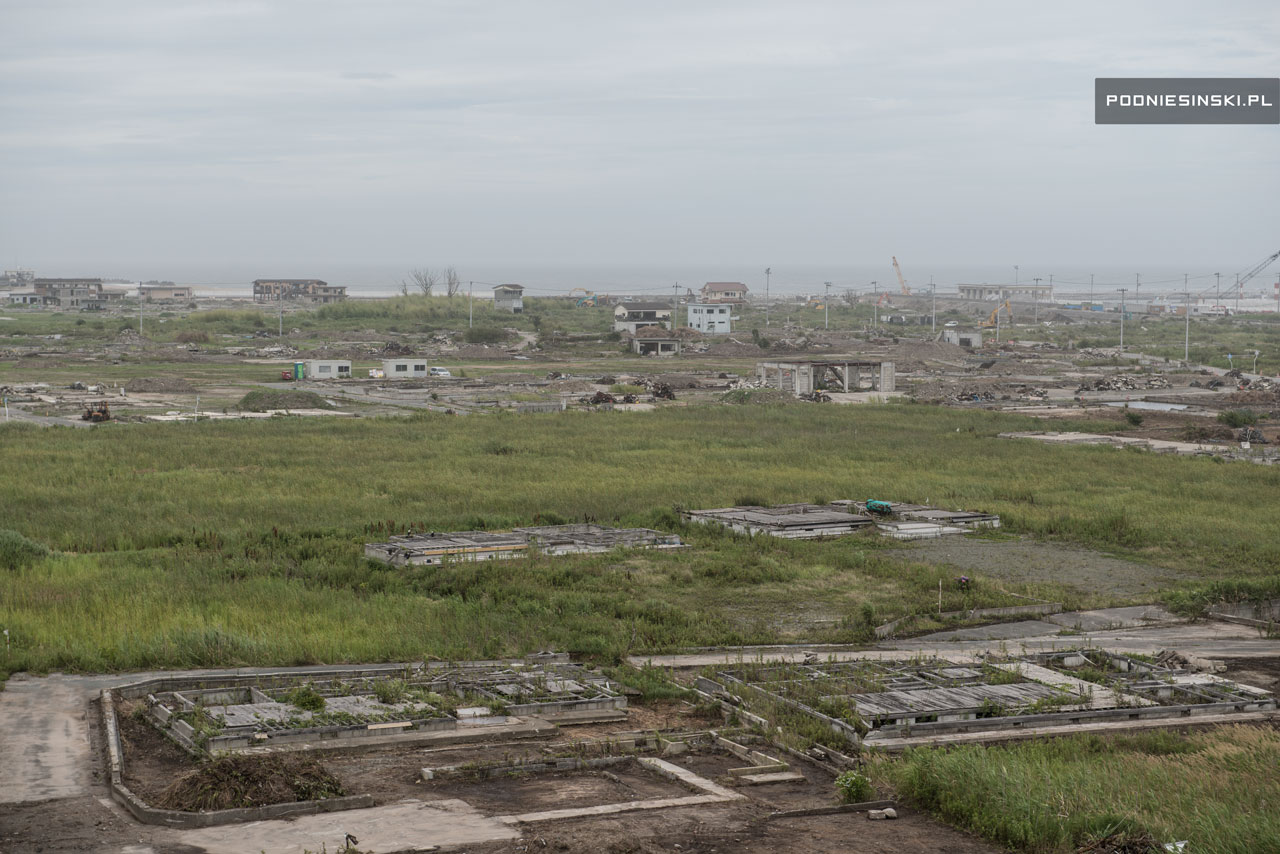
Remains of destruction in the aftermath of the tsunami. A photograph from the school’s observation tower.

Abandoned vehicles. They can’t be removed until the owners give their consent. In the background the hills to which the schoolchildren escaped.

One of the classrooms on the first floor in the school. There is still a mark below the blackboard showing the level of the tsunami wave. On the blackboard in the classroom are words written by former residents, schoolchildren and workers in an attempt to keep up the morale of all of the victims, such as / we will be reborn / we can do it, Fukushima! / stupid TEPCO / we were rivals in softball, but always united in our hearts! / We will definitely be back! / Despite everything now is precisely the beginning of our rebirth / I am proud to have graduated from the Ukedo primary school / Fukushima is strong / Don’t give up, live on! / Ukedo primary school, you can do it! / if only we could return to our life by the sea / it’s been two years now and Ukedo primary school is the same as it was on 11 March 2011, this is the beginning of a rebirth./
Finally we visit Masami Yoshizawa’s farm, who, like Matsumura, returned to his ranch shortly after the disaster to take care of the abandoned animals. Yoshizawa’s story is more interesting, however. Not long after the accident his cows started to get mysterious white spots on their skin. Yoshizawa suspects that this is due to the cows eating contaminated grass. He is trying to publicise the case, he is in contact with the media, and protests in front of the Japanese parliament, even taking one of his cows. Unfortunately, apart from financial support and regular testing of the cows’ blood, there is no one who is willing to finance more extensive tests.

Namie at dusk. Despite the area being totally deserted the traffic lights and streetlamps still work.
FUTABA
Another week of waiting and finally I receive the permit to go to Futaba, another town in the no-go zone. This town, which borders the ruined power station, is the town with the highest level of contamination in the zone. There has not been any clearing up or decontamination due to the radiation being too high. For this reason we are also issued with protective clothing, masks, and dosimeters.

The checkpoint in front of the Fukushima II power station. In the background a building of one of the reactors.
The town’s close ties with the nearby power station are not just a question of the short distance between them. Next to the main road leading to the town centre I come across a sign across the street, and in fact it is a slogan promoting nuclear energy, saying „Nuclear energy is the energy of a bright future” – today it is an ironic reminder of the destructive effects of using nuclear power. A few hundred metres further on there is a similar sign.
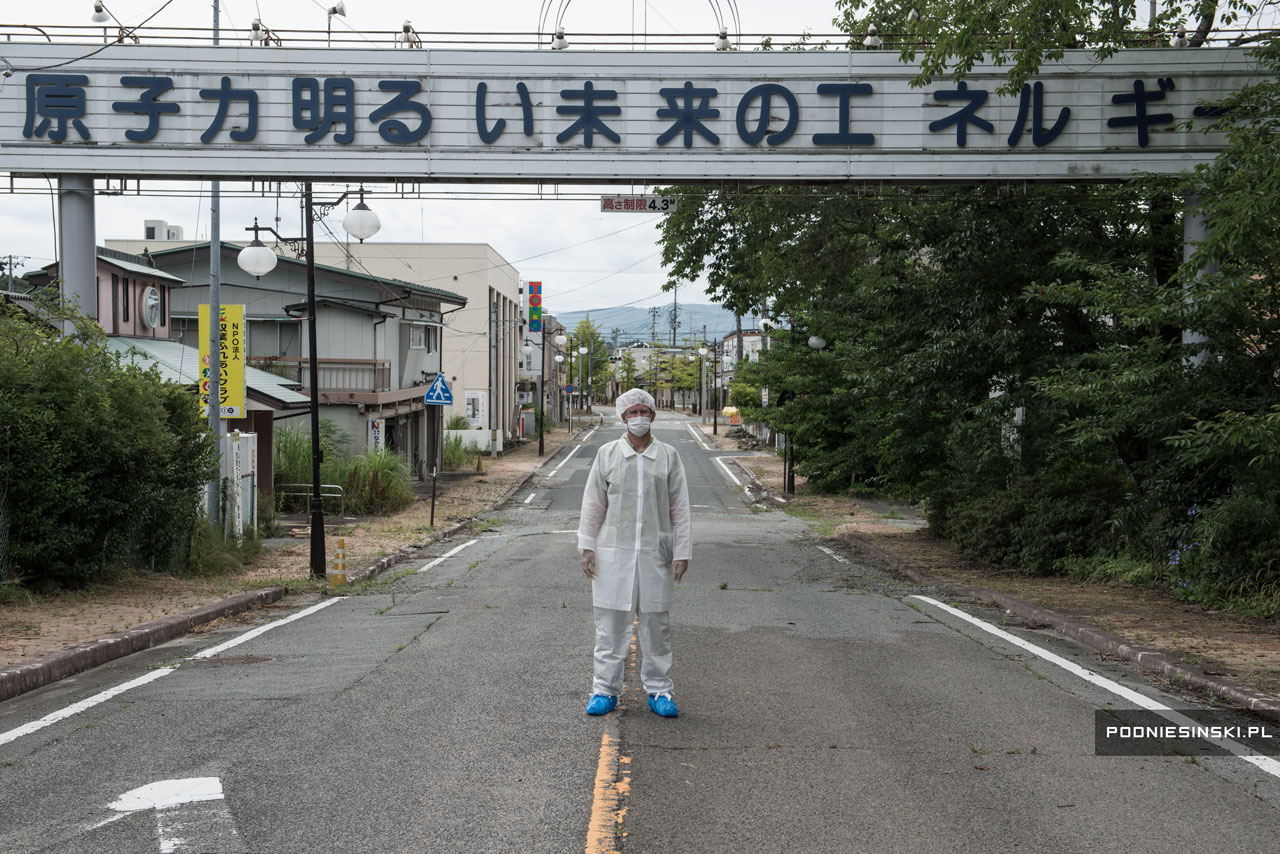
A message of propaganda above one of the main streets of Futaba – „Nuclear energy is the energy of a bright future”
While I am in Futaba I am accompanied by a married couple, Mitsuru and Kikuyo Tani (aged 74 and 71), who show me the house from which they were evacuated. They visit it regularly but due to the regulations they can do this a maximum of once a month, and only for a few hours at a time. They take advantage of these opportunities even though they gave up hope of returning permanently a long time ago. They check to see if the roof is leaking and whether the windows have been damaged by the wind or wild animals. If necessary they make some minor repairs. Their main reason for returning however is sentimental and the attachment they feel to this place. A yearning for the place in which they have their origins and spent their entire lives.
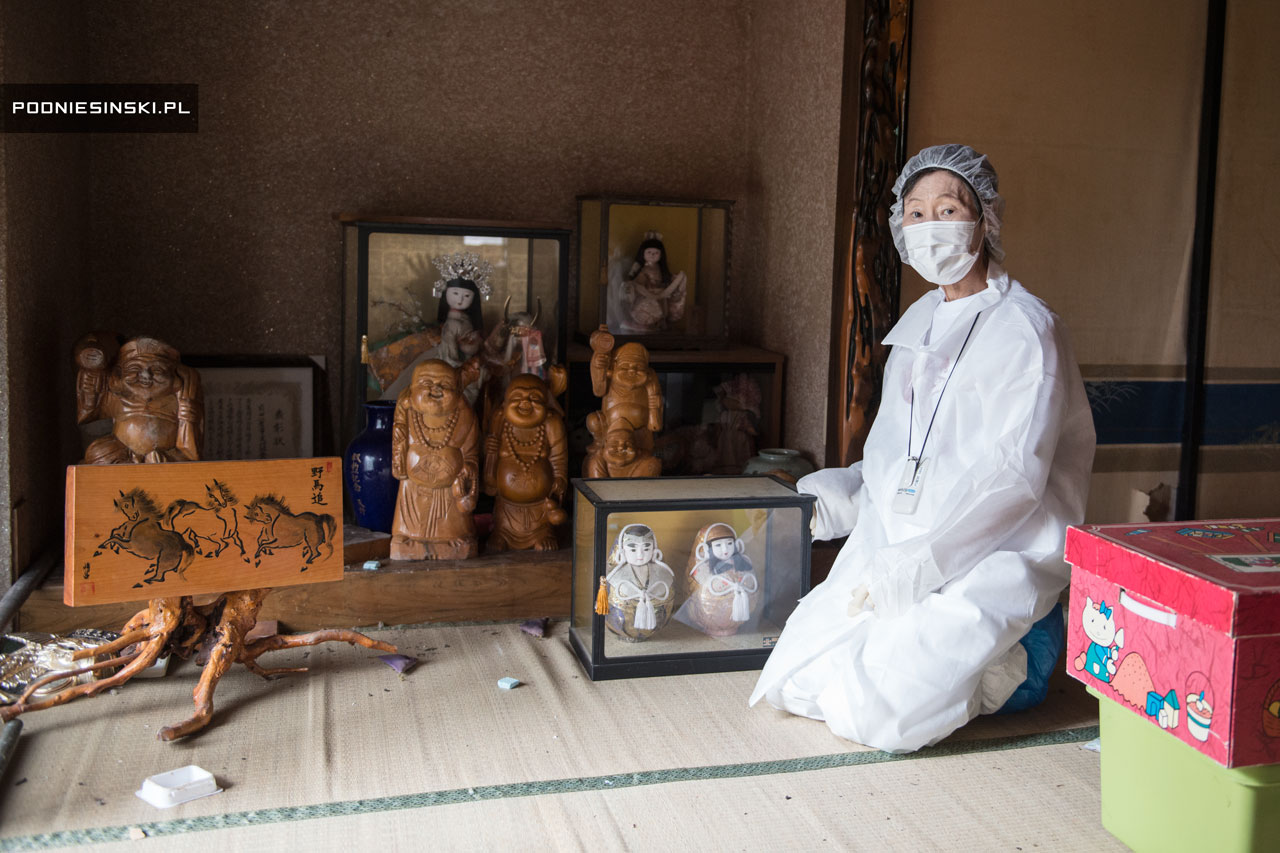
The guest room
When visiting Futaba, which borders the damaged nuclear power station Fukushima I, I can’t help but try to photograph the main culprit of the nuclear disaster, but unfortunately all of the roads leading to the power station are closed and are heavily guarded. With a little ingenuity one can see it, however. But first I go to see a nearby school.
When leaving the red zone there is a compulsory dosimeter checkpoint.
In the vicinity of the red zone I happen to notice an abandoned car. It is hard to make it out from a distance, it is almost completely overgrown with green creepers. When I get up closer I notice that there are more vehicles, neatly organised in several rows. I guess that the cars became contaminated and then were abandoned by the residents. A moment later the beep of the dosimeter confirms this./UPDATE 03.02.2016. The cars were abandoned before the 3.11 disaster but were heavily contaminated because of the 3.11 disaster./
INTERIORS
While I am in the zone I devote a lot of time and attention to taking photographs of the interiors. Photographs of this kind give a very good illustration of the human and highly personal dimension of the tragedy. They also make us aware of what the residents of Fukushima lost and the very short time they had for the evacuation. When taking photographs of the interiors of the buildings the similarities to Chernobyl are even more striking, although in Chernobyl, after almost 30 years since the disaster and thousands of tourists visiting it, it is hard to find any untouched objects. One time a teddy bear is lying completely covered with gasmasks, and a month later it is next to the window, put there so that a tourist could take a photograph in better light. These are things that were staged subsequent to the incident. In Fukushima, the disaster remains seared into the memories of residents, the evacuation order still in force, and the total lack of tourists mean that everything is in the same place as it was four years ago. Toys, electronic devices, musical instruments, and even money, have been left behind. Only a tragedy on this scale can produce such depressing scenes.
CONCLUSION
I came to Fukushima as a photographer and a filmmaker, trying above all to put together a story using pictures. I was convinced that seeing the effects of the disaster with my own eyes would mean I could assess the effects of the power station failure and understand the scale of the tragedy, especially the tragedy of the evacuated residents, in a better way. This was a way of drawing my own conclusions without being influenced by any media sensation, government propaganda, or nuclear lobbyists who are trying to play down the effects of the disaster, and pass on the information obtained to as wider a public as possible.
This was only the first trip, I am coming back to Fukushima in the autumn, and there is nothing to suggest that I will stop in the near future. This should not be understood as a farewell to Chernobyl, I will be visiting both places regularly.
Seven years ago I ended my first documentary on Chernobyl with these words:
„An immense experience, not comparable to anything else. Silence, lack of cries, laughter, tears and only the wind answers. Prypiat is a huge lesson for our generation.”
Have we learnt anything since then?
MEDIA ABOUT THE PROJECT (with English subtitles)
Click the settings (gear) icon under the video to enable subtitles
Click the settings (gear) icon under the video to enable subtitles
P.S. If you are a photographer or a filmmaker and you would like to join me on my next trip to Fukushima or Chernobyl, please write a few words about yourself and send them to this address: arek (at) podniesinski (dot)pl.
P.S. 2 If you would like to be up to date or see photographs which have not been published, follow me on Facebook or add me as a friend. Some posts can only be read by people in these groups.
ALL PHOTOREPORTAGES FROM THE CHERNOBYL ZONE:
2015 – THE ZONE IN 4K II
2015 – WINTER IN THE ZONE
2014 – THE ZONE IN 4K
2014 – OFF THE BEATEN TRACK 2
2013 – OFF THE BEATEN TRACK 1
2013 – ALONE IN THE ZONE 2 – BEHIND THE SCENES
2013 – ALONE IN THE ZONE 2 – PREMIERE
2013 – LONG WEEKEND IN THE ZONE
2012 – HEROES OF A NON-EXISTANT COUNTRY
2011 – REACTOR 4
2011 – LITTLE REACTORS
2011 – ALONE IN THE ZONE 1 BEHIND THE SCENES
2011 – ALONE IN THE ZONE 1 – FILM
2010 – ALONE IN THE ZONE 1
2010 – VICTORY DAY
2010 – CHERNOBYL 3RD EXPEDITION
2009 – CHERNOBYL 2ND EXPEDITION
2008 – CHERNOBYL 1ST EXPEDITION






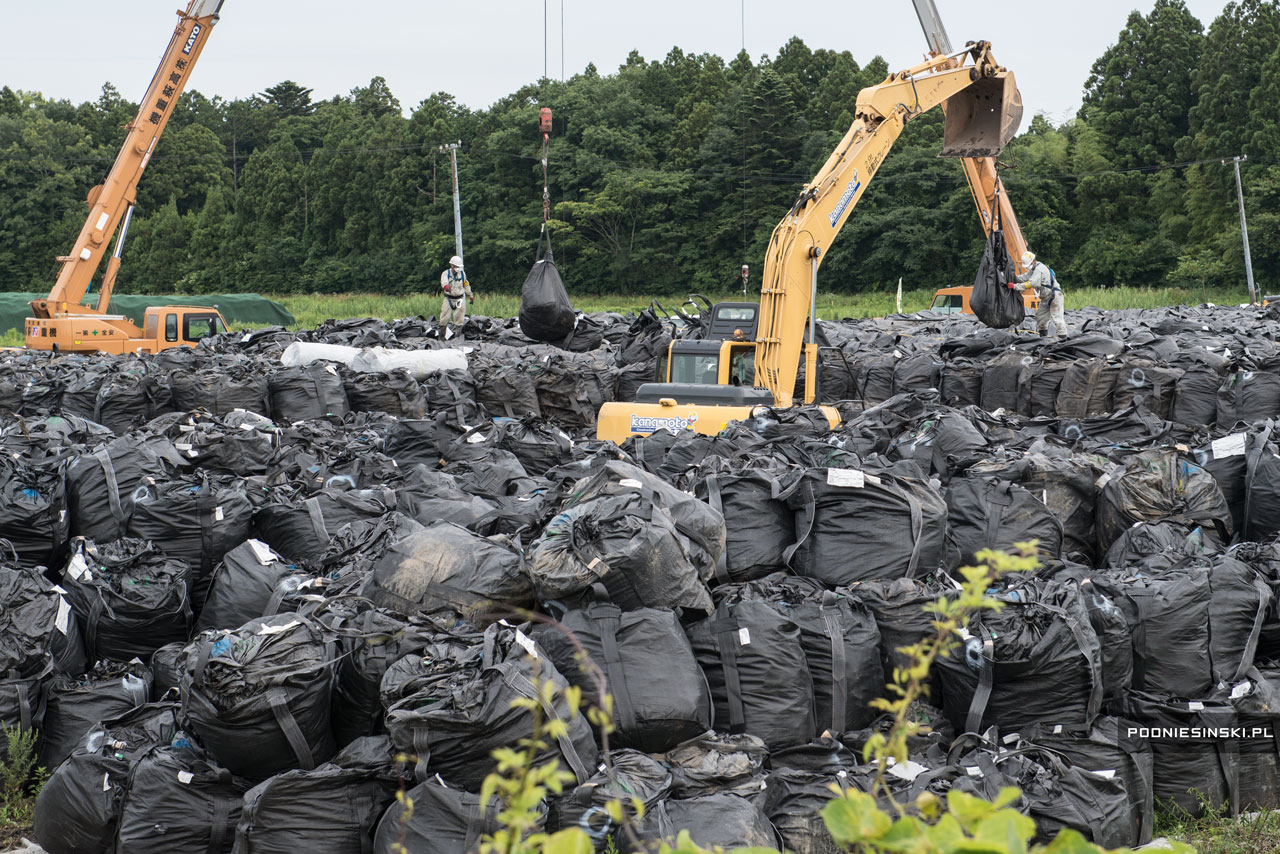




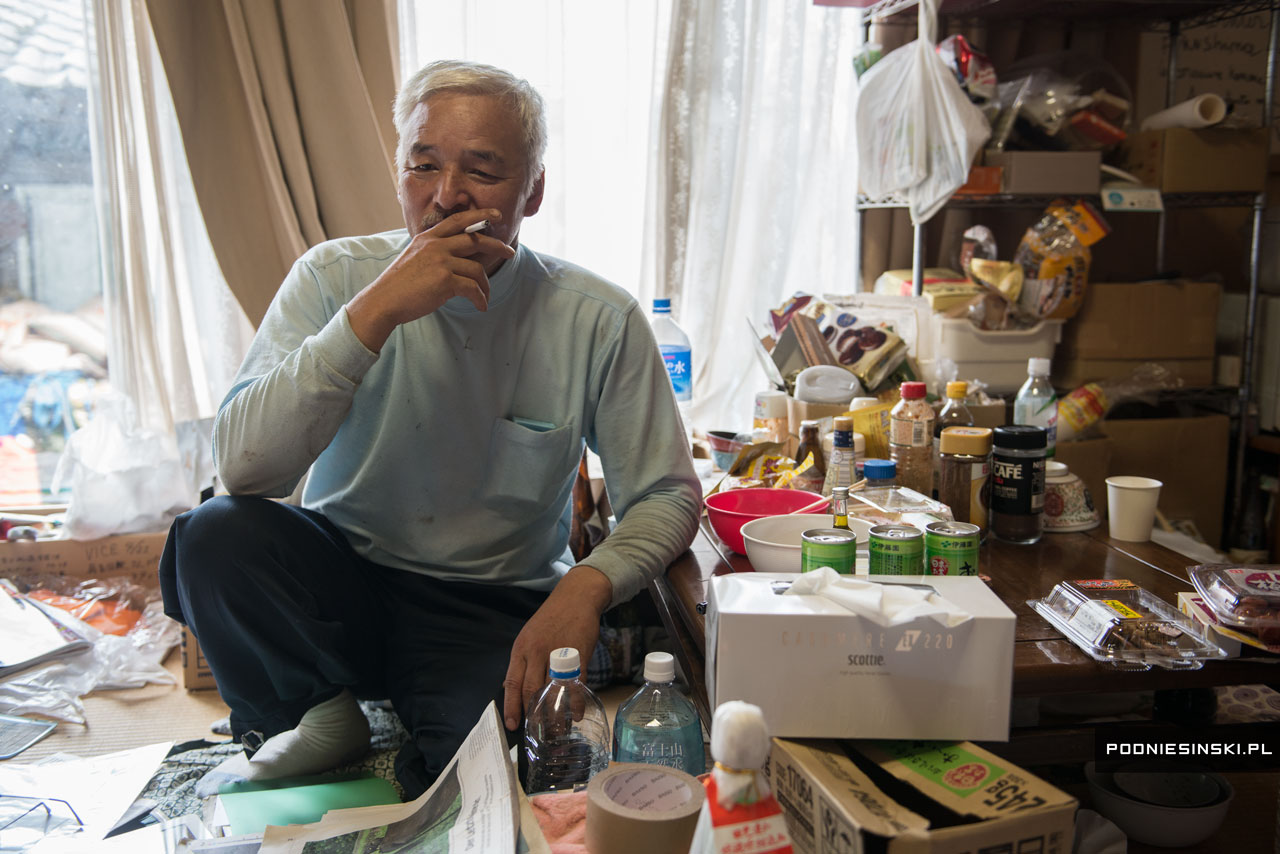



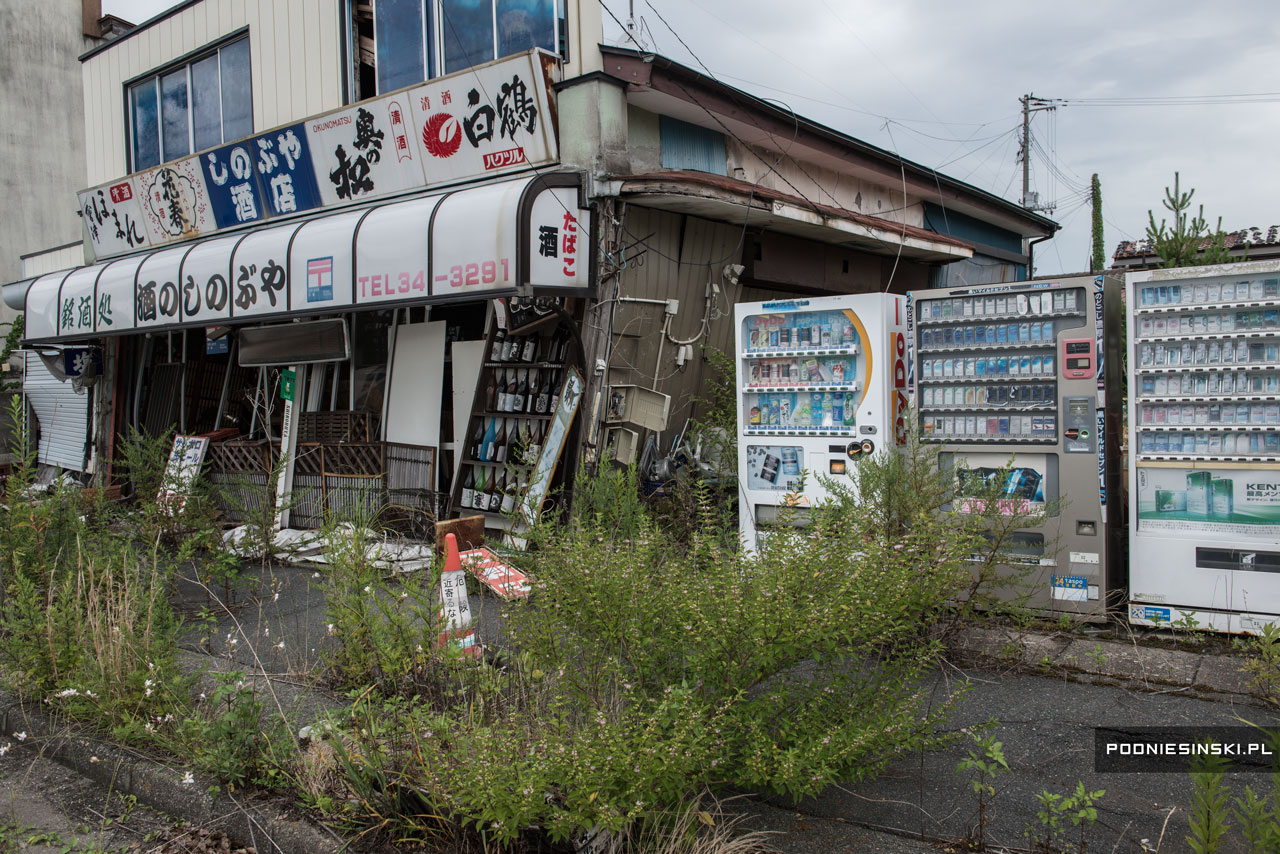

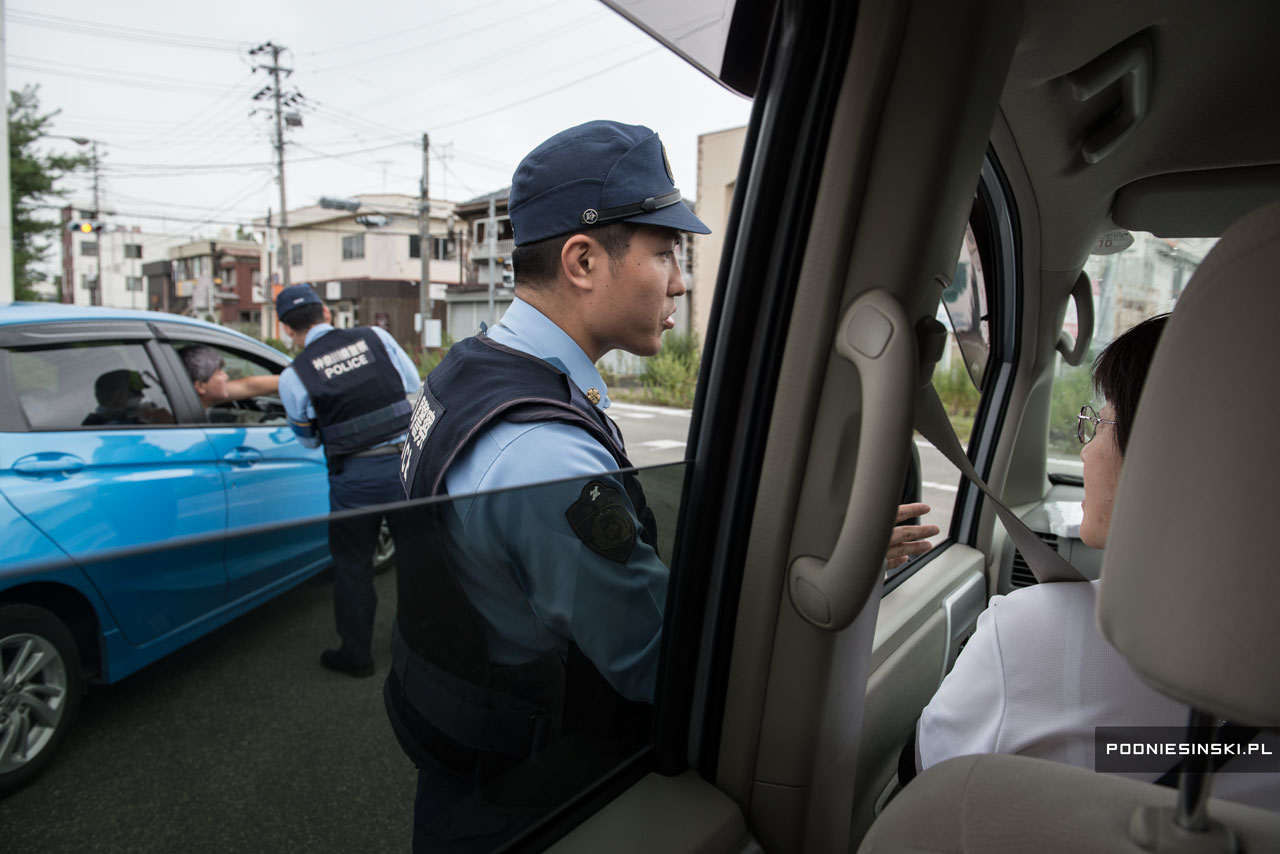
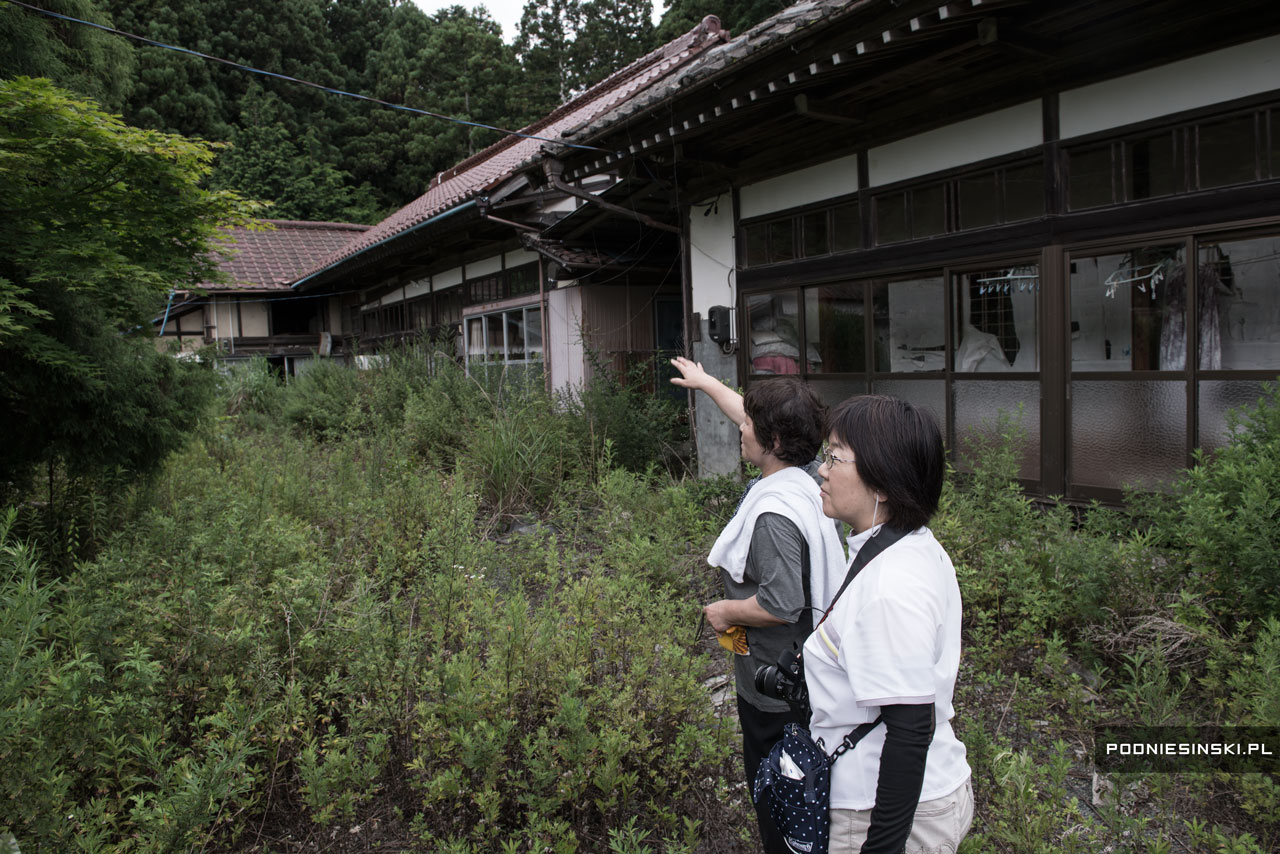

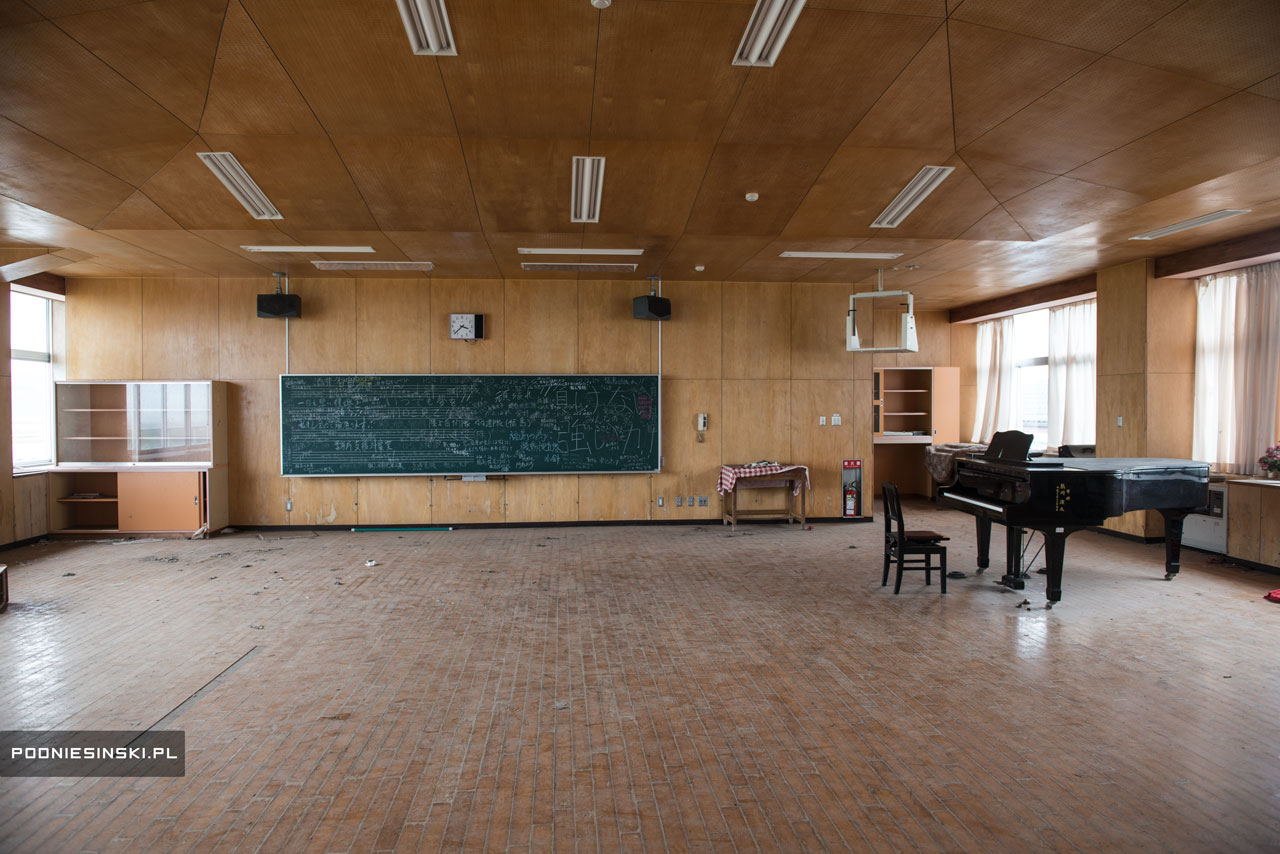

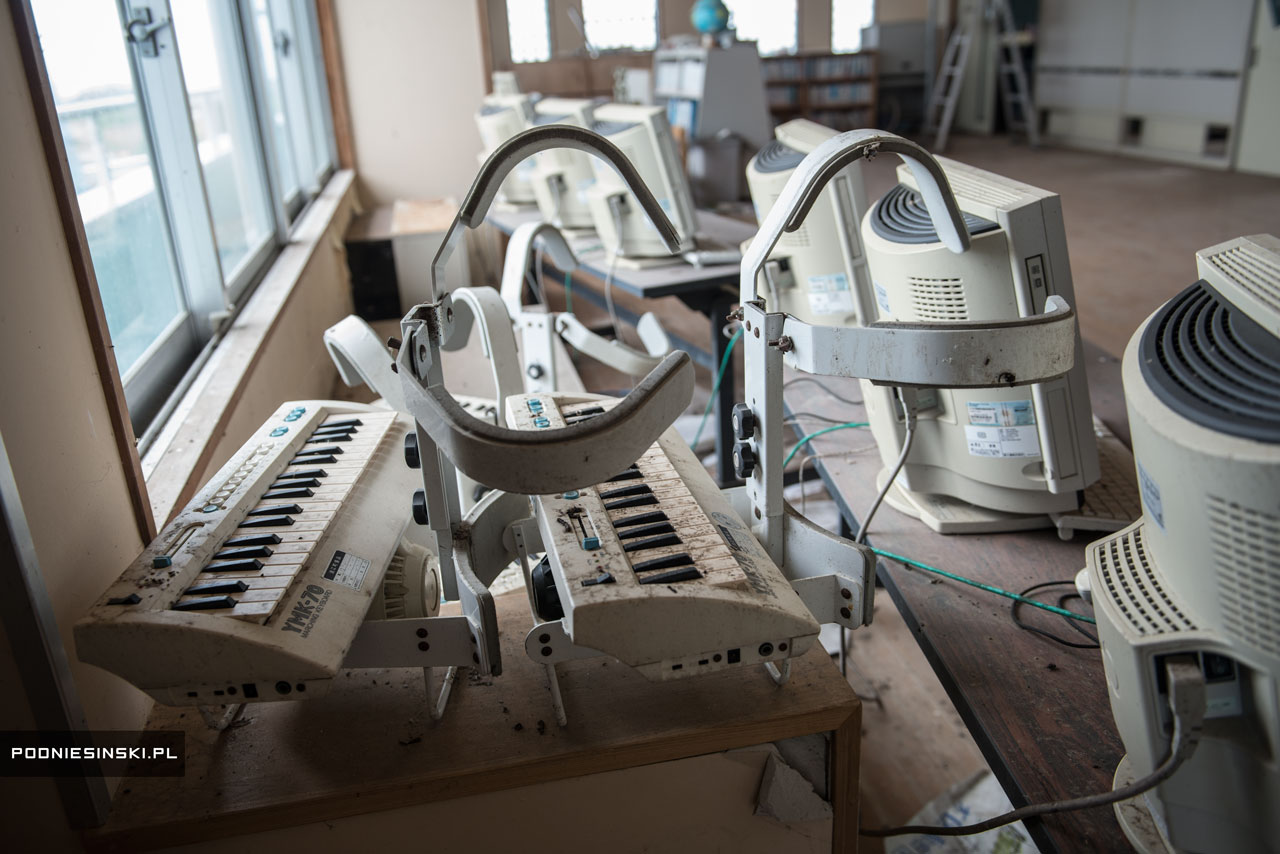

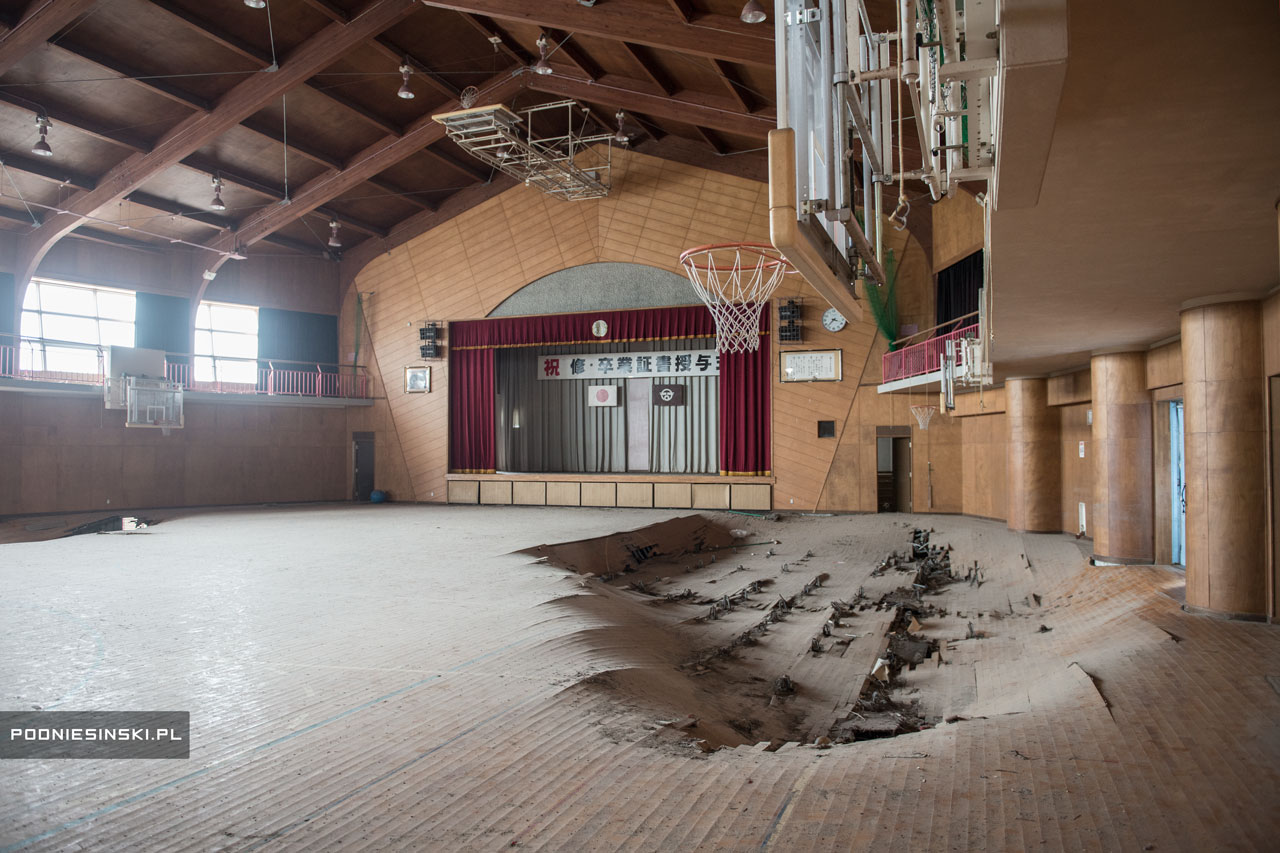

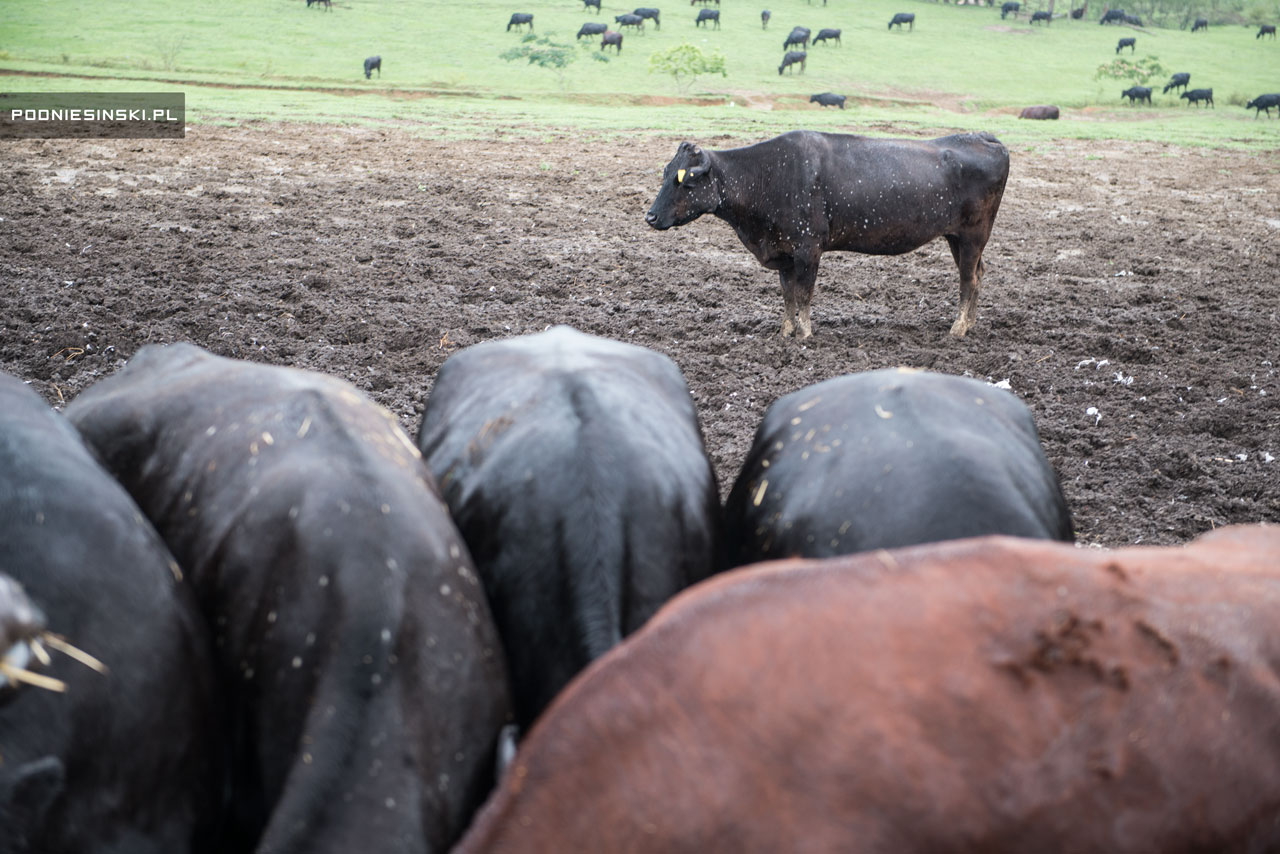



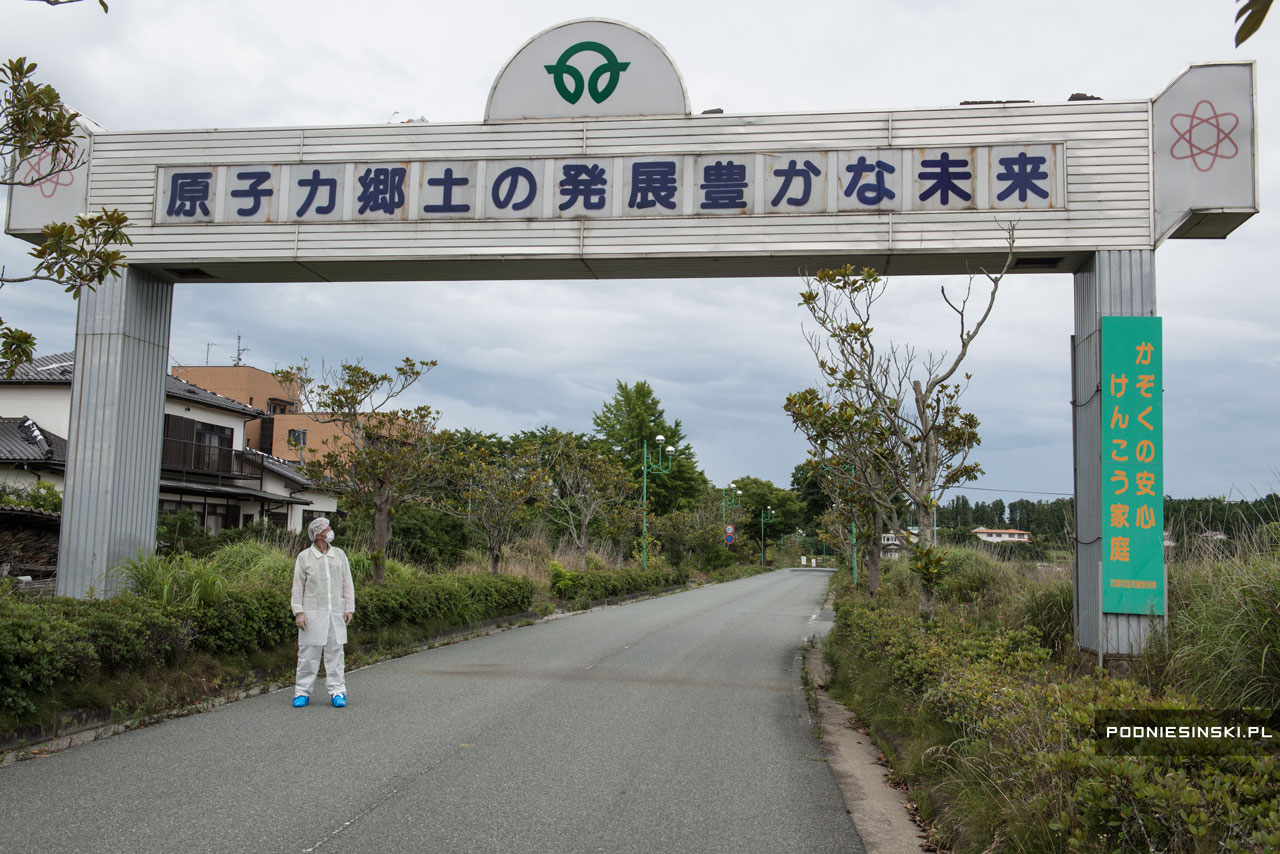
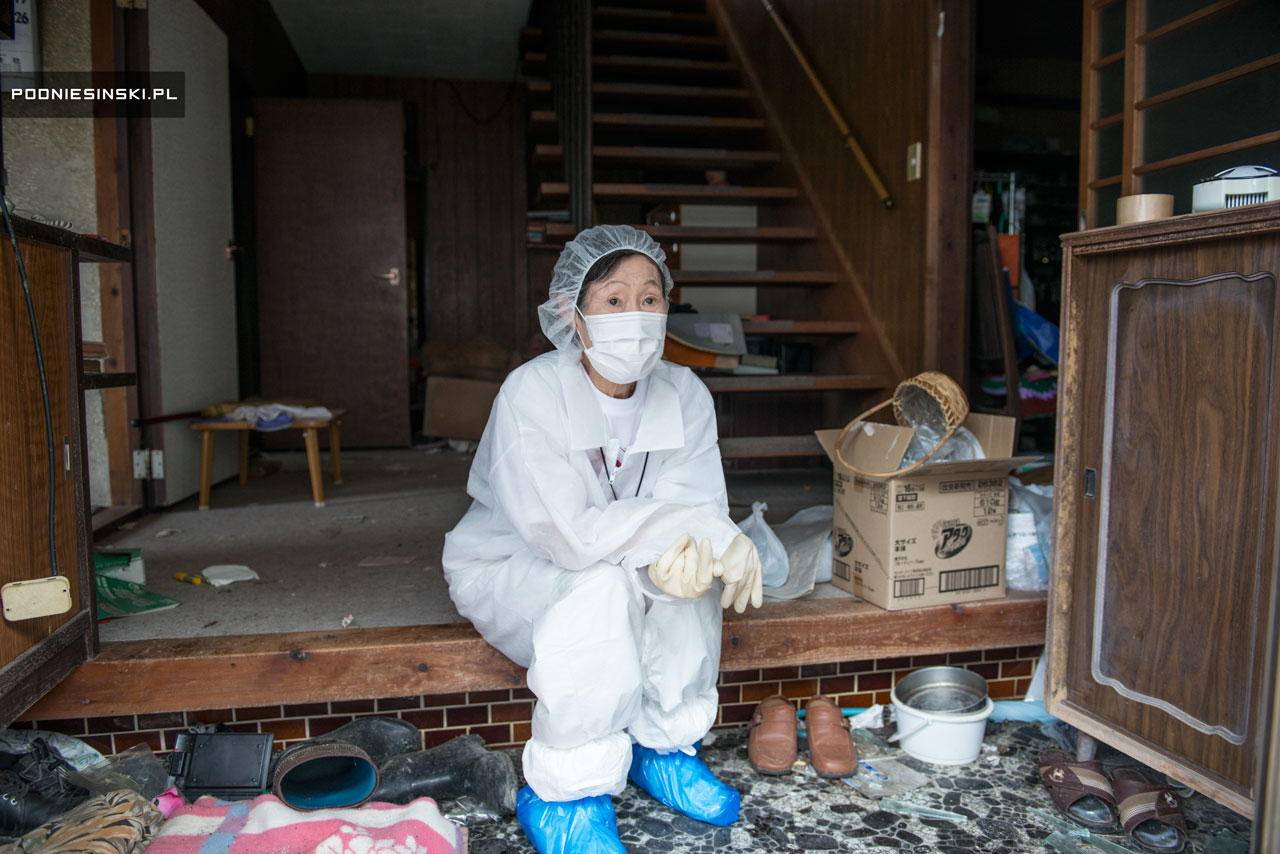

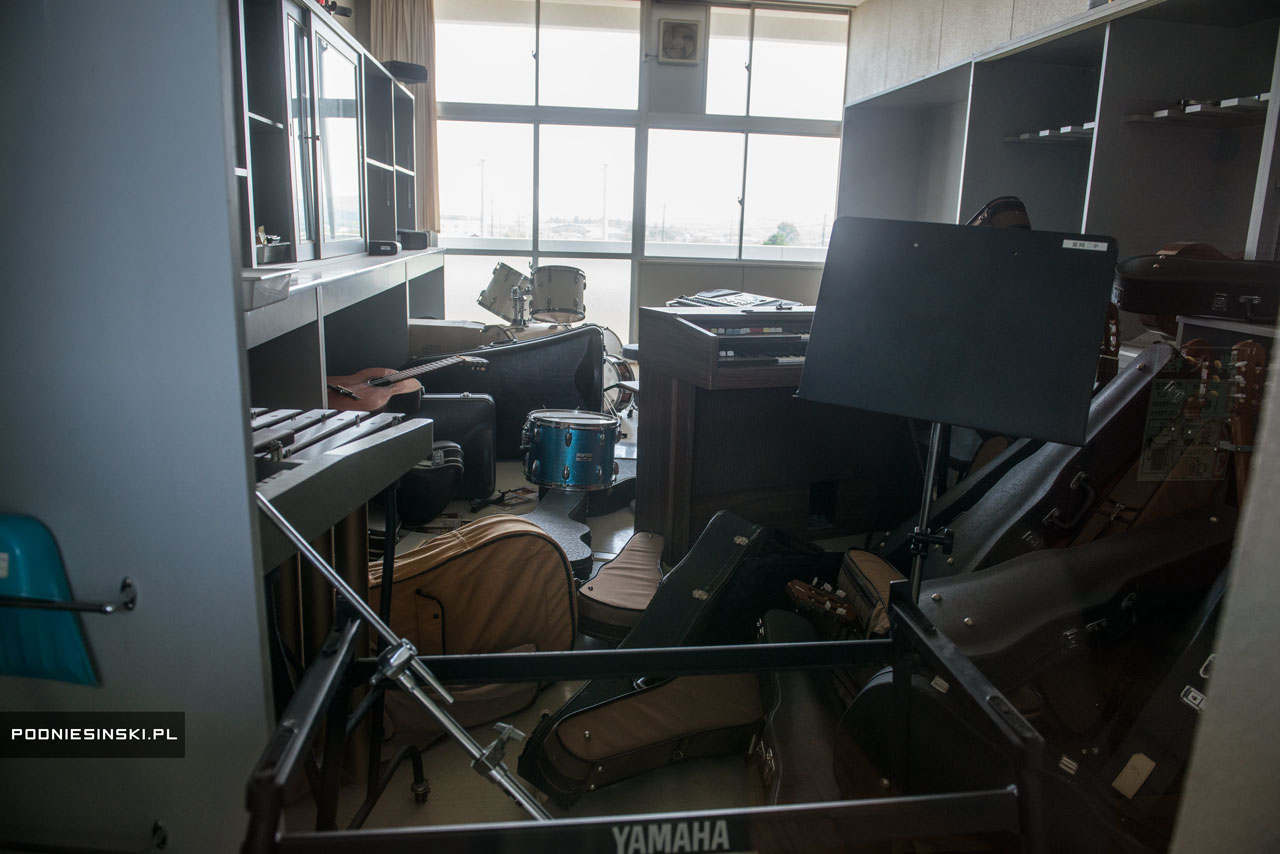

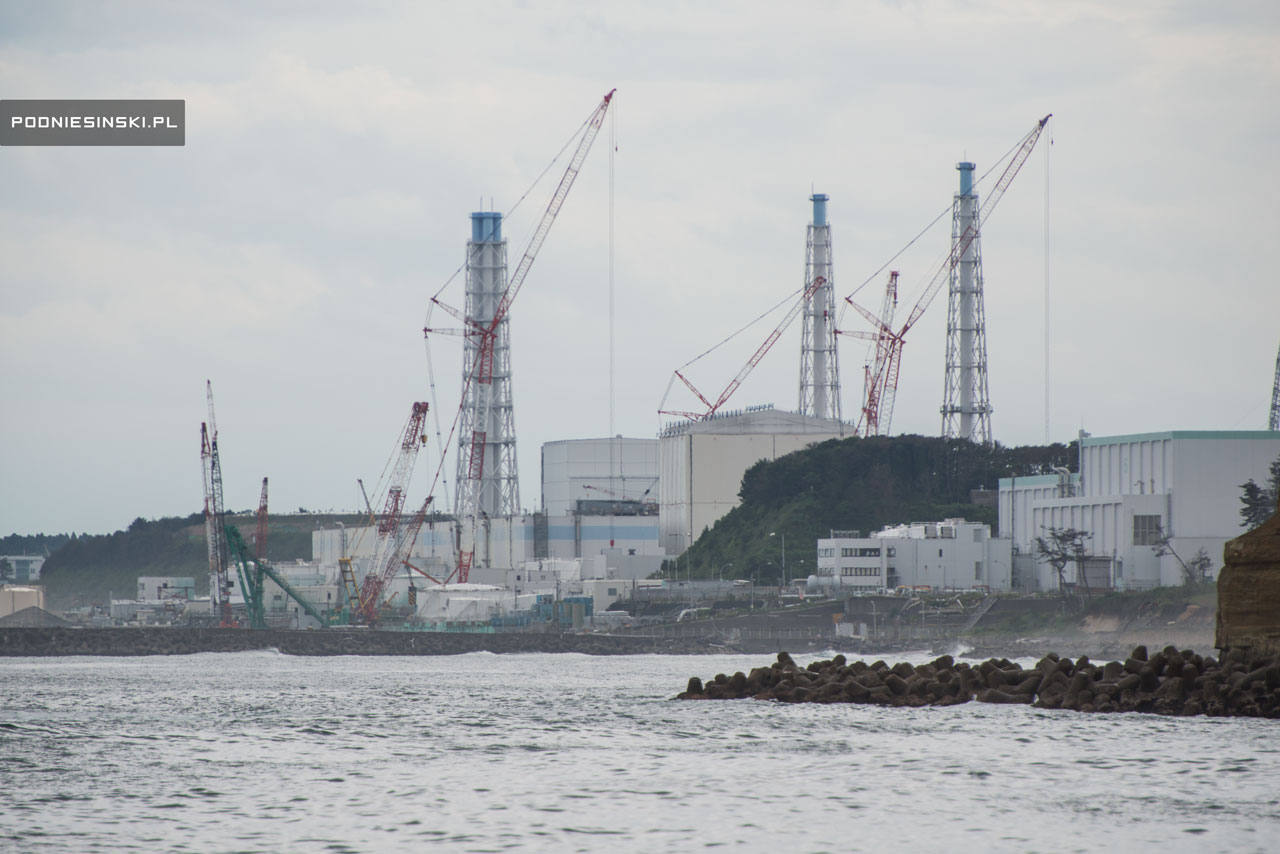






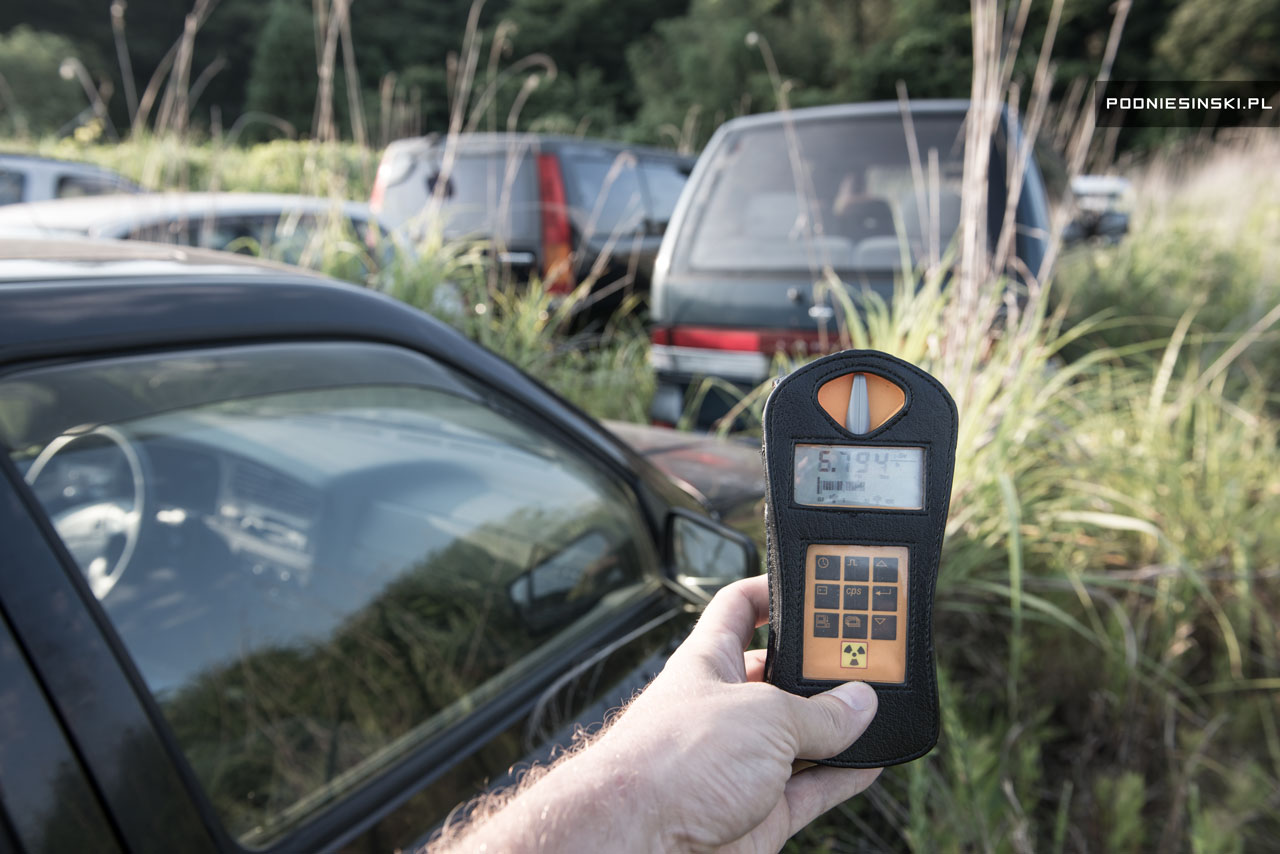












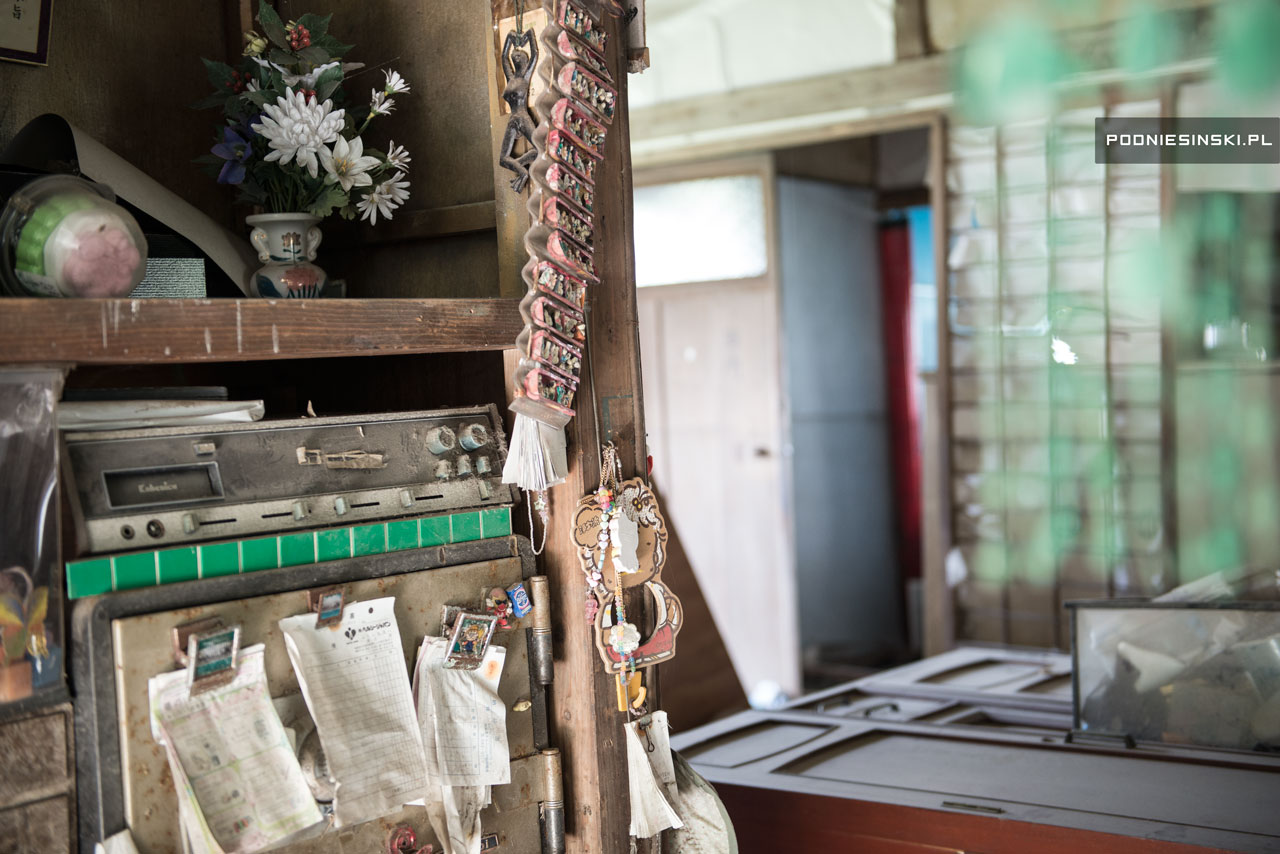







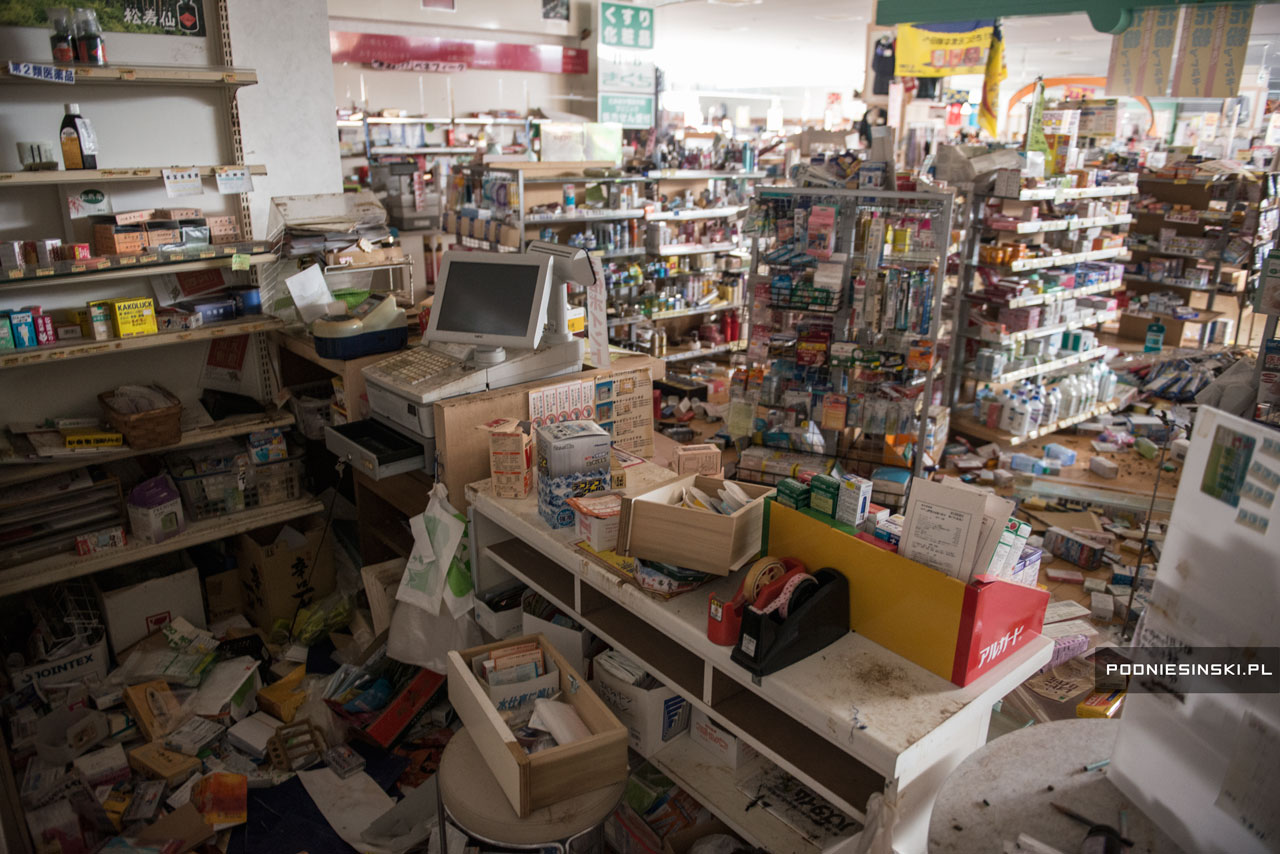


A very interesting documentary. I want to express my gratitude for contributing to not letting the topic disappear from public discussion. Are you aware of the works of documentary filmmaker Ian Thomas Ash also about Fukushima?
(I do not know him personally nor have had the opportunity, actually, to see his works myself).
So said to see that beautiful region being abandoned and turning into wilderness, while knowing that the evacuation was completely unnecessary and unjustified, except for a few limited areas. Evacuation was hasty, chaotic and took the lives of more than 1,600 people. The radiation, on the other hand, didn’t do any harm to anyone.
When will we learn to see low-dose radiation in perspective? When will we accept that it is harmless and even beneficial?
Great documentary I would like to thank you for this great write up and unique photos
Such a well written article. The photos are so amazing. Thank you so much for this.
@Rainer Klute You make very good points. I had no idea that 1,600 people died because of the evacuation on Fukushima. I believe no-one has died from the radiation. As in Chernobyl the total number of people who died because of the over the top reaction due to fear of radiation (Radiophobia) is far greater than the number of people who died because of the actual radiation. My understanding is that „Nuclear has the lowest deathprint, even with the worst-case Chernobyl numbers and Fukushima projections, uranium mining deaths…” that’s the rate of deaths/trillionkWhr. And that includes solar, wind and hydro. See article here: http://www.forbes.com/sites/jamesconca/2012/06/10/energys-deathprint-a-price-always-paid/
Niclear is still the safest form of energy on the planet.
All of this is absolutely appalling. Thank you so much for your very thorough and very determined report on the current situation in Fukushima. Why is it that the only politician who has the guts to start getting rid of nuclear energy is a woman—Angela Merkel? Why is it that the French national electricity company has just increased their use of nuclear energy from 79 to 82%? (I live in France.) Thank you for reminding us of this vitally critical issue.
PLEASE DO NOT PUT MY EMAIL ADDRESS ON THE INTERNET! I was so touched at your work that I decided to give you my email address despite the risk. Please keep it to yourself. Thank you. Are you Polish?
Very interesting article, but no CC button to get the English subtitles for the videos.
I have to agree with Rainer Klute, interesting pictures and stories. But fundamentally it doesn’t address the question of if that level of radiation is actually unsafe. There is a massive effort to decontaminate but the actual exposure, shown by all the measurements you observed, is relatively low and there are other places in the world where natural radiation exposure is much higher. I applaud the clean up operation and I am sad for the residents, but we have to remember that it was the tsunami that did the damage, and the tsunami which took the 15,893 lives.
To address Pamela, Germany’s reaction to Fukashima has been massively disproportionate and will probably cause more deaths because of their increased dependency on fossil fuel energy generation, even in Japan they are now turning their reactors back on because the impact of turning them off has been too much. The most harm is done by irrational fear of nuclear energy not the energy itself and our irrational fear is killing more people by using alternatives that we are too comfortable with. If people bothered to do research they would realise that nuclear energy is actually one of the safest forms of energy overall.
The author is good at telling a story, but I don’t think it is told particularly objectively, telling stories about nuclear disasters seems to be the calling here.
>Why is it that the only politician who has the guts to start getting rid of nuclear energy is a woman—Angela Merkel?
Well, nuclear energy is perceived as a very mysterious and dangerous 'invisible killer’, but all others ways of producing energy are actually way more harmful. So-called 'green’ energy has very low EROI and causes environmental pollution or damage in some way, fossil-burning is causing thousands and millions cases of cancer every year even not considering environmental impact, and imagine if Fukushima had had a hydroplant instead of nuclear station when the disaster came and its dam broke down – the death toll could easily be ten times higher than the tsunami.
Also, we need to remember that Fukushima power plant was an old, outdated and poorly operated one. The nuclear disaster could have been prevented.
Even though I’m a Japanese living in Tokyo area, I seldom have had a chance to see such a literally „documentary”.
I really appreciate your effort.
Hi, I’m a journalist from Kolkata, India and work for a 140-yer-old English newspaper called The Statesman. Your pictures of Fukushima are very impressive and offer a peek into a hidden world. I wish to interview you on this photo essay and showcase your pictures to our readers in India. I’ve given my email id above so please try to get in touch with me whenever you have time. Thanks
J’ aimerais beaucoup le lire en Français
Merci
I have been to Namie 2 years ago, didn;t have a professional camera with me (unfortunetly!) but I took some pix, if someone would like to see – however it is nothing compare to this lovely gallery! (I am not a professional photographer):
http://gumkowska.wordpress.com
A question to the author: Are you planing to go to Fukushima again, maybe try to get to the RED restricted area?
cheers
Anna
Good job men! Continue doing somthing like it.
Sou brasileiro, e fiquei chocado com as fotos que ví.
O documentário é impresionante para qualquer ser humano minimamente sensível.
Pode-se concluir que a energia nuclear não é segura em qualquer país do mundo. Estamos todos numa situação de insegurança, apesar do Brasil ter somente 3 usinas nucleares, contudo muitos defendem que essa fonte de energia será o futuro da humanidade.Espero que isso não mais aconteça.
Congratulations Mr. Podniesinski,
I was very impressed with such uniqueness that you photographed the reality of the people of this place.
I am Brazilian and lived in Japan at the time that this incident occurred.
Came away after one month for fear of invisible danger has never been fully disclosed by the media in Japan.
I keep watching the news from Fukushima because I care about the way they have to handle the radioactive waste, and consider to be a very great danger to all mankind.
The black bags outdoors, radioactive water that must be trickling into the Pacific Ocean, all nature being genetically modified ….. That’s very sad.
Gratitude for their courage, for their work in disclosure of these photos, we hope to release more and more that their work. I pray that people can live in peace, with security and tranquility anywhere on this planet. Thank you ! Best Regards.
As Bob H pointed out, it was the tsunami that triggered this massive catastrophe, not the earthquake. However, what he didn’t point out was the culpability of TEPCO for ignoring safety measures necessary to guard against a potential tsunami that created this disaster to environment and community.
While nuclear power has the potential to be „safe”, humans seemingly still do not posses the aptitude or willingness to safely maintain facilities or expeditiously transform the waste product into harmless material. In the latter case, stacking plastic bags of contaminated soil close to the ocean creates a disaster waiting to happen. Has anything been learned from these types of disasters???
Very impressed! In this summer, I also went to with my friends with opened national route 6, but we cannot take such beaftiful photos. Photos sometime tell lot of things than words.
I want to Second propaganda’s translation is little different.
„Local nuclear energy guarantees a lively future”
-> „Nuclear Energy (guarantees) growing hometown (and) lively future”
And although it is progpaganda, this is actually not a message from government, but came from 12 years child of their hometown (local people makes message). From now, this is more ironical message.
http://www.asahi.com/articles/ASH6551C0H65UGTB00L.html
People in seaside of Fukushima prefecture (including Namie and Futaba) is basically poor than mountainside people. And, they decided to accept nuclear risk for protecting their lives with getting rewards and jobs from it. Of course, there are many discussions for accepting risk of nuclear plants for accepting such risky things, and there are many political pressure in here. But finally they decided by themselves. These two messages are shared them for uniting them. They bet and dreamed, then they losed everything.
I hope foreign people to remeber that this accident is one of the case that happened on democratic country like several europian countries (not like Soviet Union). This is not specific case, and I hope that the process of failure must be shared on all over the world.
I just read the book of novel prize winner Svetlana Alexievich’s ” Voices from Chernobyl” to understand our situation in Japan. Then I reached your website and am very shocked. I stun for the fact we have such evacuation area in Japan. I stun for the fact still Japanese government tries to move our nuclear power plants in other area in Japan nevertheless this disaster in Fukushima. I stun for the fact most of Japanese tries not to think of what happened and keep forgetting. I don’t know what to think, but at least not to forget, by the words of predecessors such as Alexievich and people in Chernobyl, and to let people know the incident in Japan and the world. Thank you for sharing your pictures. I really thank you.
There is a sense that the abandonment by humans and the return to wilderness is a tragic thing. And yet wildlife thrives even in the abandoned Chernobyl zone. Is this really the worst that can happen? In humans, cancer can take decades to manifest in the wake of radiation exposure. But animals, which may live less than 20 years, can often lead their entire lives with seemingly less adverse effect. I do not think the fact that these areas have been reclaimed by nature is a bad thing. I do feel, however, it is exceedingly bad to keep people in the dark. You know the situation is dire when information about Fukushima has been criminalized by the Japanese government — a no-go even on the part of Japanese media. The people of Japan must be afforded the dignity to determine what they are willing to tolerate, particularly if they have young children. Sound decision making requires transparency and accountability. Silence is the protector of corruption and ignorance. The most frightening thing in my mind is the fact that the issue has all but disappeared even in the U.S. and elsewhere. We are an international, global community now. Commerce should not come ahead of the public health, especially when it concerns the welfare of the Japanese people themselves. I am a firm believer that there are solutions to just about any problem. But new and novel developments will rely upon open exploration of the scientific options. And we can’t put the world’s best minds to work to advert current or future nuclear disasters if government officials are bent on minimizing the scale of the current one.
Good Work! Very Sad to see… The Photos do not lie.
Thank you for the effort and publishing them here. I would like to read more!
The pictures tell a thousand stories, so incredible and yet so sad…
Very Bob Ross.
I think at Chernobyl when the cleaning robots broke down because of the high levels of radiation, soldiers were sent in to clear up. I’m pretty sure many of them died after suffering greatly and I wonder if their families were compensated for in any way. Objectively nuclear energy might be „safe”, but the problem is we don’t have the ability to deal with the storage of nuclear waste, which lasts for thousands of years. Even the language we use will become unrecognizable after that length of time.
Very expressive pictures and interesting-to read report. Great work, thank you for sharing!
Hi Arkadiusz,
I came across your fascinating images of the Fukushima exclusions zone and would love to feature them in an article I’m writing for Scribol.com.
You would of course be clearly credited, with links provided back to your work.
Please let me know how that sounds.
Thanks,
Danny.
Hello from Singapore! I came across your site from Telegraph. I’m a 21 year old male who loves travelling, and to visit the Fukushima Exclusion Zone is in my bucket list! May I seek your advise on how you got to doing this? :)
To say that the scenes of desolation & abandonment are caused by human agency is obvious. The question is, whether it is more the agency of those who built and operated the reactors, or those who ordered the evacuation? To understand that, we must look at the scientific guidance issued by agencies such as the United Nations Scientific Committee on the Effects of Atomic Radiation, the International Committee on Radiation Protection, and the World Health Organization. Furthermore, it is useful to compare the radiation levels in the „contaminated” areas with the variation in naturally-occurring background radiation around the world. (Contrary to the beliefs stated in some quarters, the human body has no way of knowing the difference between „natural” & „artificial” radioactivity.)
https://decarbonisesa.com/2015/10/25/not-humbled-angered-visiting-fukushima-part-2/
Dear Mr Podniesinski,
It was a worth reading, very good effort and full of new knowledge documentary sharing .Thank you a lot for your hard work and translated to English.Keep up your good work , be safe.
I am wondering if one day a film producer will make a documentary film based on your story or even a thriller /horror film with these abandoned and haunted-look film set.
– sweet note from Malaysia.
To whom it may concern
We are a non for profit organisation who publish a mission magazine 'The Far East’ once a month.
In our next edition of the magazine we will be featuring an article from one of our Columban Fathers Fr Paul McCartin, who has written a piece on the Fukushima update. Would it be possible to republish a couple of the images above giving full credit back to your website?
I look forward to your response.
Kind regards,
Assunta Arena
Marketing & Communications Coordinator
Columban Mission Centre, Essendon, Australia
To whom it may concern
I posted a comment last month requesting copyright permission for a couple of the images above and never received a reply. We would like to once again publish an article in our magazine The Far East, written by Columban Fr Sean McDonagh on 'cleaning up Fukushima’. The article will feature in the April issue of the magazine and we are once again requesting copyright permission for the images above.
We are on a tight deadline and require a prompt reply.
I look forward to your response.
Kind regards,
Assunta Arena
Marketing & Communications Coordinator
Columban Mission Centre, Essendon, Australia
This is awesome what you put together here. I took over two hours reading and gazing at every single picture. I appreciate you taking a personal risk just to carry this information to the world.
This is one of the most heart breaking things i have seen on the internet, but i want to thank you for recording these tragedies for future generations to see and possibly learn from. What japan is doing in fukushima, is way way more than any of the other countries would do if they had a nuclear disaster.
Nuclear power is our best hope for the future at the moment. Using isolated incidents to shit on the entire concept is intellectually dishonest and morally damaging.
I hardly think that documenting and photographing the aftermath of a nuclear disaster is „shitting on the entire concept”. If you don’t like the images, or aren’t interested in the history, move on…
There are a lot of things wrong with that. I don’t think it’s possible for people who don’t understand Japanese to research and cover Japan. In particular, the picture of the car park is completely misunderstood by you, and the cars were there long before the earthquake. It was nothing more than an abandoned car lot.
Amazing pics
Hello! I would like to ask a question: some places look like were trashed instead damaged by the tsunami, like the chemistry or supermarkets in the photos. Are there any looters that came after the disaster?